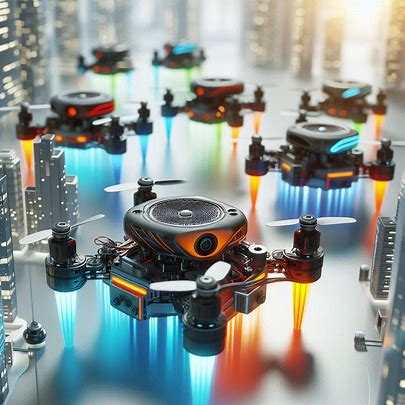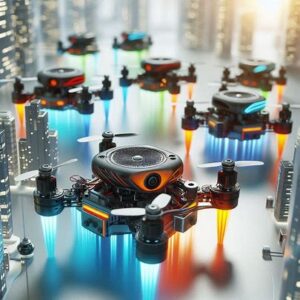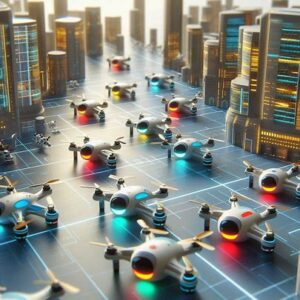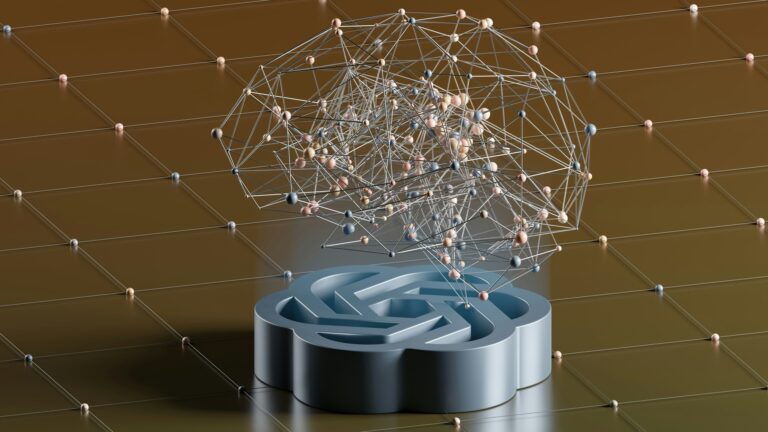
Introduction
Picture a group of tiny robots working together like a flock of birds or a colony of ants, tackling tasks too complex for a single machine. This is the essence of swarm robotics, a fascinating field where multiple robots collaborate autonomously to achieve common goals. Inspired by nature, swarm robotics harnesses collective intelligence to solve problems in innovative ways, from disaster response to space exploration. This article explores what swarm robotics is, how it works, its real-world applications, current trends, and its potential to transform industries, all presented in an engaging and accessible manner for everyone.
What is Swarm Robotics?
Swarm robotics is a branch of robotics where large numbers of relatively simple robots work together in a coordinated manner to accomplish tasks. Unlike traditional robotics, which often focuses on a single, complex machine, swarm robotics emphasizes decentralized control, where each robot operates independently but follows simple rules to achieve collective behavior.
Key Features of Swarm Robotics
- Decentralization: No single robot controls the group; each follows local rules, leading to emergent group behavior.
- Scalability: Swarms can include dozens to thousands of robots, adapting to task size.
- Robustness: If one robot fails, others continue, ensuring system reliability.
- Flexibility: Swarms can reconfigure to handle diverse tasks or environments.
For example, a swarm of small robots might clean an oil spill by dispersing across the water, each collecting tiny amounts of oil, collectively achieving a large-scale cleanup.
How Swarm Robotics Works
Swarm robotics draws inspiration from natural systems like ant colonies or fish schools, using algorithms to mimic their behavior. Here’s a simplified overview:
- Local Sensing: Each robot uses sensors (e.g., cameras, infrared) to gather data about its environment and nearby robots.
- Simple Rules: Robots follow basic instructions, such as “move toward light” or “avoid obstacles,” without a central plan.
- Communication: Robots share information locally, often via wireless signals, to coordinate actions.
- Emergent Behavior: Individual actions combine to produce complex group outcomes, like forming shapes or mapping areas.
For instance, a swarm mapping a disaster zone might have each robot explore a small area, share findings with neighbors, and collectively create a detailed map without a leader directing the process.
Real-World Applications of Swarm Robotics
Swarm robotics is poised to revolutionize industries by offering efficient, adaptable solutions to complex challenges.
Disaster Response
Swarm robots can navigate hazardous environments, like collapsed buildings or wildfire zones, to locate survivors or assess damage. For example, researchers at Harvard developed tiny Kilobots that can swarm into formations to search rubble, relaying data to rescuers.
Agriculture
In precision farming, swarms of small robots monitor crops, plant seeds, or apply pesticides. The European Union’s SAGA project uses drone swarms to map fields and detect weeds, reducing chemical use and boosting yields.
Environmental Monitoring
Swarm robots track ecosystems, such as oceans or forests, collecting data on pollution or wildlife. The University of California’s RoboBee project deploys miniature robots to monitor environmental changes, mimicking bee behavior to cover large areas.
Construction and Infrastructure
Swarms can build structures autonomously. MIT’s termite-inspired robots stack blocks to create complex designs without central control, potentially revolutionizing construction in remote or hazardous locations like Mars.
Space Exploration
NASA is exploring swarm robotics for planetary missions. Swarm satellites, like CubeSats, could work together to map asteroids or monitor Mars’ surface, offering cost-effective, resilient exploration compared to single, large spacecraft.
Every major story has impact — know how to read the news like a trader in our finance section.

Current Trends in Swarm Robotics
As of June 2025, swarm robotics is advancing rapidly, driven by innovations in AI, miniaturization, and connectivity. Here are key trends shaping its future:
AI and Machine Learning Integration
AI enhances swarm intelligence by enabling robots to learn and adapt. Reinforcement learning allows swarms to optimize tasks, like Georgia Tech’s drone swarms that learn to navigate crowded spaces without collisions.
Miniaturization
Smaller, cheaper robots are expanding swarm applications. Advances in micro-electronics enable palm-sized robots, like EPFL’s Tribots, to perform tasks in tight spaces, such as inspecting pipelines or medical procedures.
5G and IoT Connectivity
5G networks provide low-latency communication for swarms, while IoT integration allows seamless data sharing. This supports real-time coordination, as seen in urban drone swarms managing traffic flow in smart cities.
Bio-Inspired Algorithms
Researchers are developing algorithms mimicking natural swarms, like fireflies or slime molds. These improve swarm efficiency, enabling tasks like self-organizing power grids or adaptive traffic systems.
Human-Swarm Interaction
Interfaces for controlling swarms are improving. Augmented reality (AR) systems, like those tested by the U.S. Navy, let operators guide drone swarms intuitively, enhancing applications in defense and logistics.
Sustainability Focus
Swarms are being designed for eco-friendly tasks. Projects like the EU’s Robocoenosis use biodegradable aquatic robots to monitor marine pollution, minimizing environmental impact.
Benefits of Swarm Robotics
Swarm robotics offers compelling advantages:
- Efficiency: Swarms complete tasks faster by parallelizing work across many robots.
- Resilience: Decentralized systems continue functioning despite individual failures.
- Cost-Effectiveness: Simple, mass-produced robots are cheaper than single, complex machines.
- Adaptability: Swarms handle dynamic environments, from shifting terrains to unpredictable conditions.
- Scalability: Adding more robots increases capacity without redesigning the system.
Challenges of Swarm Robotics
Despite its potential, swarm robotics faces hurdles:
- Coordination Complexity: Ensuring thousands of robots work harmoniously requires robust algorithms.
- Power Limitations: Small robots have limited battery life, restricting operational duration.
- Security Risks: Wireless communication makes swarms vulnerable to hacking or interference.
- Ethical Concerns: Autonomous swarms in defense or surveillance raise questions about accountability.
- Scalability Limits: Managing very large swarms in real-world conditions remains technically challenging.
Addressing these requires advancements in algorithms, energy solutions, and regulatory frameworks.
The Future of Swarm Robotics
Swarm robotics holds immense promise for the future, with transformative potential by 2030:
- Global Disaster Response: Swarms could deploy instantly worldwide, saving lives in earthquakes or floods.
- Space Colonization: Robotic swarms could build habitats on the Moon or Mars, preparing for human arrivals.
- Healthcare Innovations: Micro-swarms might navigate the human body to deliver drugs or perform surgeries.
- Smart Infrastructure: Swarms could maintain bridges, pipelines, or power lines autonomously, reducing costs.
Investment in AI, connectivity, and ethical guidelines will ensure swarm robotics delivers widespread benefits.

Conclusion
Swarm robotics is redefining what robots can achieve by mimicking nature’s collective intelligence. From disaster rescue to space exploration, its applications are diverse and impactful, offering efficient, resilient solutions to complex problems. As trends like AI integration, miniaturization, and 5G connectivity propel its growth, swarm robotics promises a future where collaborative machines enhance our world. By overcoming challenges like coordination and security, this technology can unlock new possibilities, creating a smarter, more connected planet for all.



